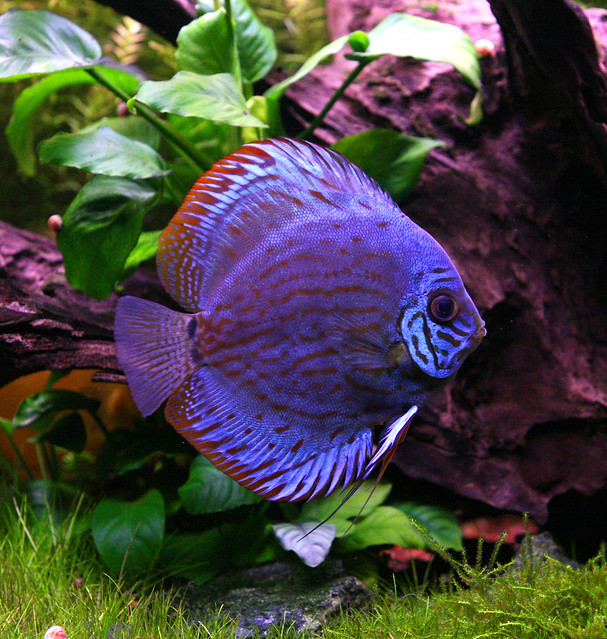 |
Photo by Jessa B.C.  |
Those who breed discus as a hobby will be more than surprised to notice that the discus show signs of connection to the environment outside the tank. For instance breeding discus as a hobby implies spending lots of time around the tank, cleaning, feeding or simply watching the discus. They are said to recognize the owner in time and they can get as close to you as to eat out of your hand. When breeding discus as a hobby, some owners have noticed that the discus will watch you move around the room or even react to TV noise.
Apart from such social behavior, discus enjoys silence and a close community with other fellows from the same species. If you take discus as a hobby, you may want to take into consideration that they prefer living in close communities that is together with several other members. The dominant discus would be the first to couple, followed by the others if proper conditions are met. Even if you breed discus as a hobby you may still have to separate the couples in a different tank allowing them to raise their fry.
For everyone who takes discus as a hobby, it is important that all the proper living conditions are kept under constant observation. You should not use for instance a too powerful lamp for your discus; as a hobby, you’d like to keep them in the spotlight, but this warms the water above the accepted level and reduces the oxygen quantity. There is a short step to take between breeding discus as a hobby and breeding them at a professional level, after all, discus requires the same attention no matter your devotion. Even if you take discus as a hobby, you still have to pay attention to their needs all the time! Refer to Discus Fish As Hobby for more information.
|








